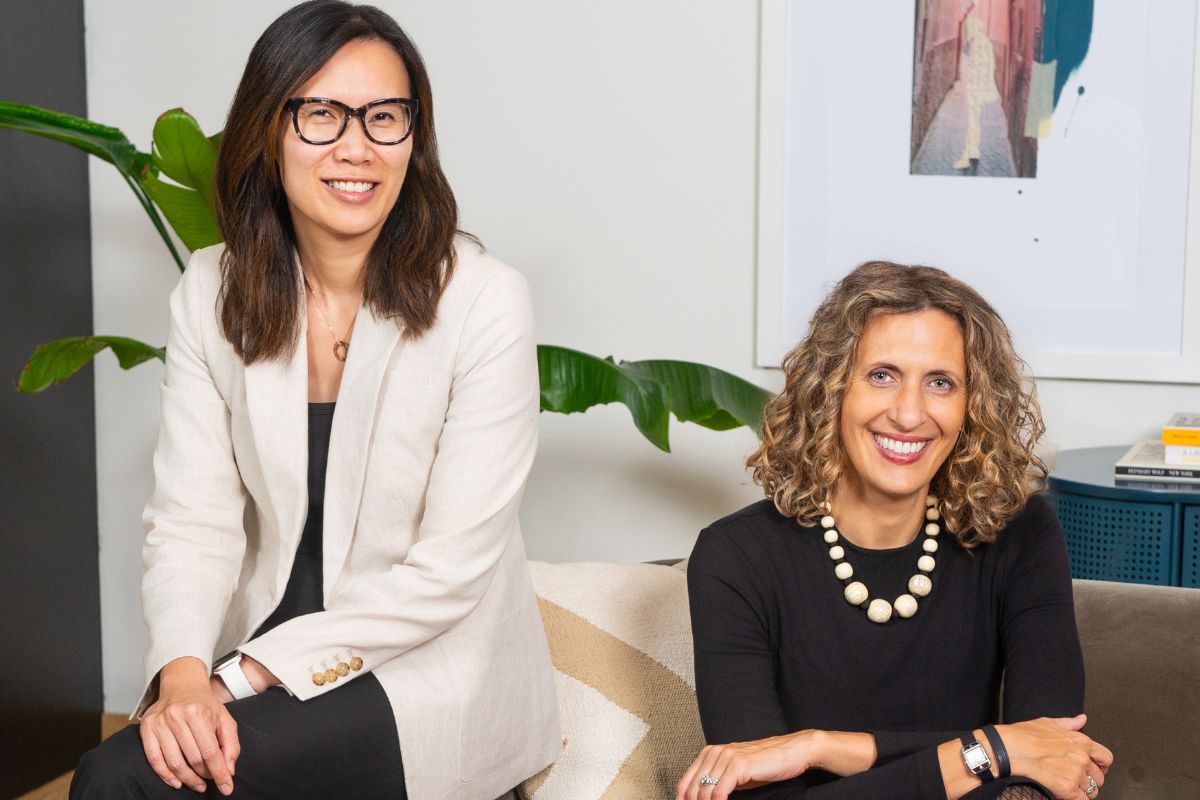In a landscape where small and midsize businesses move faster than the financial infrastructure meant to support them, OneAM is betting on a smarter, more transparent approach to working capital. Co-founders Ksusha McCormick and Charlotte Ng bring a unlikely blend of quantitative finance, payments innovation, and product strategy — a combination that feels tailor-made for this moment.
In this week’s Q&A, they unpack how cleaner data, modern underwriting, and shifting institutional appetite are finally creating the conditions to reinvent a space that has resisted change for decades.
1- Tell us a bit about yourself, and how you got the idea for your company.
I’ve spent most of my career in fixed income pricing and risk — from trading FX and interest rate derivatives at Morgan Stanley to portfolio management at a hedge fund, to later leading a fixed income pricing and risk analytics provider called Decameron Technologies. Across much of it, the throughline has been the same: making use of heterogeneous data and identifying models that make risk easier to understand, price, and manage.
When I met Charlotte, everything clicked. She approached financial risk from the perspective of using technology to improve access to fairly priced financial products — and possessed deep experience in new product development that leveraged the two-sided payment network, operational rails, and trusted infrastructure of Mastercard. As we compared notes, it became clear that the lessons we learned on our respective paths could be applicable to building a radically better solution for the working capital problem faced by small and midsize businesses.
2- What problem/ opportunity do you address, and for which customers?
Small and midsize businesses are the backbone of innovation and employment in the U.S., but they consistently struggle with working capital — a nearly $4 trillion problem. Many SMBs sell into large corporations with long payment terms and have limited ability to negotiate with their large end customers.
Receivables finance has existed forever, but it’s historically been opaque, manually underwritten, and poorly priced because the underlying assets are messy and idiosyncratic. Banks often can’t move quickly, and many alternative lenders price for maximum protection rather than actual risk.
At the same time, transactions are becoming more digital, supply chains more transparent, and data quality is improving across the board. That creates a moment where you can finally bring institutional-grade risk analytics and infrastructure to a segment that’s been underserved for decades.
3- What is your solution/ USP, and who do you compete with?
Institutional-grade risk pricing and analytics: Our analytics help us understand and price risk efficiently across thousands of invoices, enabling better economics for SMBs and more confidence for institutional capital.
An origination engine and operational infrastructure: The onboarding and funding process for SMBs using OneAM for early pay is designed to be fast, efficient, and business-friendly. But behind an easy-to-use product, there is a carefully constructed legal structure, payments and AML / KYC orchestration, servicing workflow, technology rails, and trust mechanisms that enable the marketplace to function smoothly and scale.
The result is a platform where SMBs get faster, fairer access to capital, and institutions get the transparency and control they need. It’s a better experience for both sides of the market.
4- What are the industry trends or market shifts in your space, and can you point us to any relevant research?
A few major tailwinds make OneAM’s approach feasible today:
- Digitization of payments and receivables: More data, cleaner data, and real-time visibility into transactions.
- The emergence of AI/ML techniques that complement classical methods of underwriting opaque assets.
- Macroeconomic pressure on SMBs: Long payment terms and supply-chain volatility make working capital a daily constraint.
- Institutional appetite for new fixed-income-like assets: Especially ones with short duration and relatively low correlation to other asset classes.
5- What is your company’s current stage and traction?
We recently announced our recent institutional seed round, a milestone that gives us the resources to accelerate our growth. Our team includes leaders in quantitative finance, payments infrastructure, data engineering, and operational servicing. We have strong early partners and customers, and our platform is live, expanding, and delivering real value to SMBs. It’s been incredibly rewarding to see our vision resonate with both customers and investors.
6- Your plans for the next 6–18 months, and how can our network help?
Our focus areas include:
- Expanding our early pay platform and analytics engine
- Deepening institutional partnerships
- Scaling onboarding and servicing infrastructure
- Continuing to refine our models as we learn from real-world performance
Where help matters most: connections to SMBs that sell to large end customers, and to banks and other financial institutions interested in partnering with us.
7- What’s on your bookshelf or podcast app? Your favourite place for a coffee or a drink?
I’m not an early adopter when it comes to fiction. I read my first Henry James novel only a few years ago, and now my goal is to read them all. My favorite place to get a coffee is Double Dutch in Harlem, and my favorite place to get a drink is at a restaurant, accompanied by a good meal!
As capital markets continue to evolve, McCormick’s perspective lands with uncommon clarity: the tools are finally here, the data is ready, and the demand from both SMBs and institutions is only growing. OneAM sits at the intersection of those forces, building the rails for a fairer, faster, more intelligent working-capital ecosystem.
If this conversation is any indication, the next chapter in receivables finance won’t just be incremental—it will be transformative.

